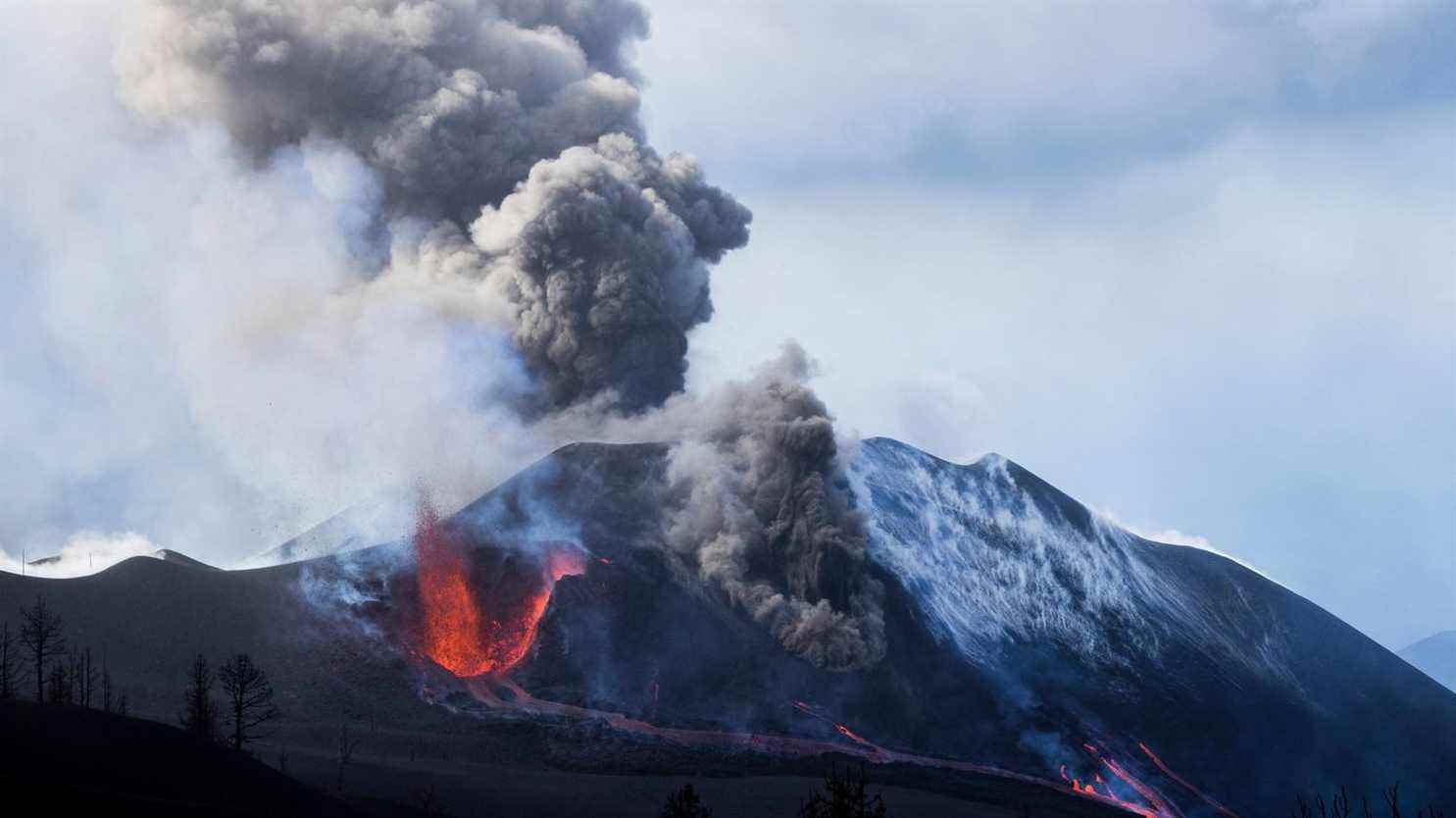The Cumbre Vieja volcano, on the Spanish island of La Palma (Canary Islands), has calmed down after three months of intense activity. The eruption has officially ended since Saturday, December 25, 2021. Even if the volcano “stay active”, he will “to rest for a while”, probably “a half-century”, predicts Jacques-Marie Bardintzeff. On franceinfo, this volcanologist and professor at Paris-Saclay University explained that the tongue of land that formed after the lava flows should be inhabited by plants and animals “from next year”. According to him, this is a textbook case “interesting”, which could be well studied thanks to modern technologies.
franceinfo: How can we explain such a duration of eruption?
Jacques-Marie Bardintzeff: This is called the productivity of deep magma. Under the volcano, there are pockets of magma that form and are expelled regularly. In La Palma there is an eruption on average every century, sometimes twice a century, sometimes zero. We will therefore say that every half-century, the volcano of La Palma has a sufficient reserve of magma to create an eruption. There, there is still magma under the island but part of it has been evacuated. In general, an eruption is considered to drain 10% of the excess magma. There are still many left. This volcano therefore remains active of course. But he will perhaps rest for a while for the greater good of the inhabitants.
There are aftershocks. Likewise, are there volcanic aftershocks?
It is true that the volcano still has a few jolts. You can compare it to a human sleeper who wakes up in the night and then goes back to sleep. There were still quite a few eruptions, on average 100 earthquakes per day. The record was 376 earthquakes in a single day. We fell back to less than 20. Thursday, there were 11 earthquakes and Saturday, nine. So that’s a pretty good sign. But it is not zero and there is no such thing as zero risk. In that case, you have to make a decision. So my Spanish colleagues decided – and they are right – that the eruption was over. If it starts again, then it will be a new eruption. The probabilities are low, but they are not zero. The longer the volcano will fall asleep for a certain time, the quieter we will be, on average for half a century, statistically, of course.
In 85 days, the island’s geography changed with this lava that flowed into the ocean and solidified. This created an additional tongue of land of approximately 43 hectares. Is this new tongue of land an interesting place of study for a volcanologist?
Sure. This will interest all geologists, biologists … How will a land that starts from zero be colonized by insects, pollens, birds and mammals? This is the bright side of volcanism. This island of La Palma was created thanks to the volcano. If there are no volcanoes, there are no islands. We therefore realize that the volcano is neither nice nor bad. He has anger which is of course dramatic for the people who inhabit the island. Conversely, the rest of the time it results in a city which is pleasant to live in and which is also worth visiting for tourists.
How long does it take before vegetation grows on this new strip of land formed?
These volcanic lands are very fertile, but it all depends on the climate. In La Palma, it’s hot and humid, so things will go really fast. From next year, there will be plants. On Reunion Island – which we know well – there are growing vanillas, orchids and ferns. And then, as soon as there are plants, there are animals. There will be voles, shrews, rodents, insects, birds, mammals, reptiles, lizards … And La Palma will regain its natural beauty that it has lost in an area. It’s ambivalent because it’s true that a lot of things are destroyed all the same, including ecological niches, but they start again quite quickly. It’s give-and-take. We will say that the volcano is part of the ecosystem. We deal with it. And in the Canaries, all the islands are volcanic islands.
What was interesting about this rash?
It is an interesting textbook case which caused material damage and which could be studied very well, so it was interesting at the scientific level. The last eruption dated back to 1971. Techniques have evolved so much that we have been able to follow this eruption perfectly for a long time, with drones, satellite images, recordings, samples and gas captures. During the last eruption, we had photos which were not very clear, which were blurry. We have such new techniques that we were really able to have an eruption which was followed from start to finish, for three months, as precisely as possible, with the most modern means possible.
